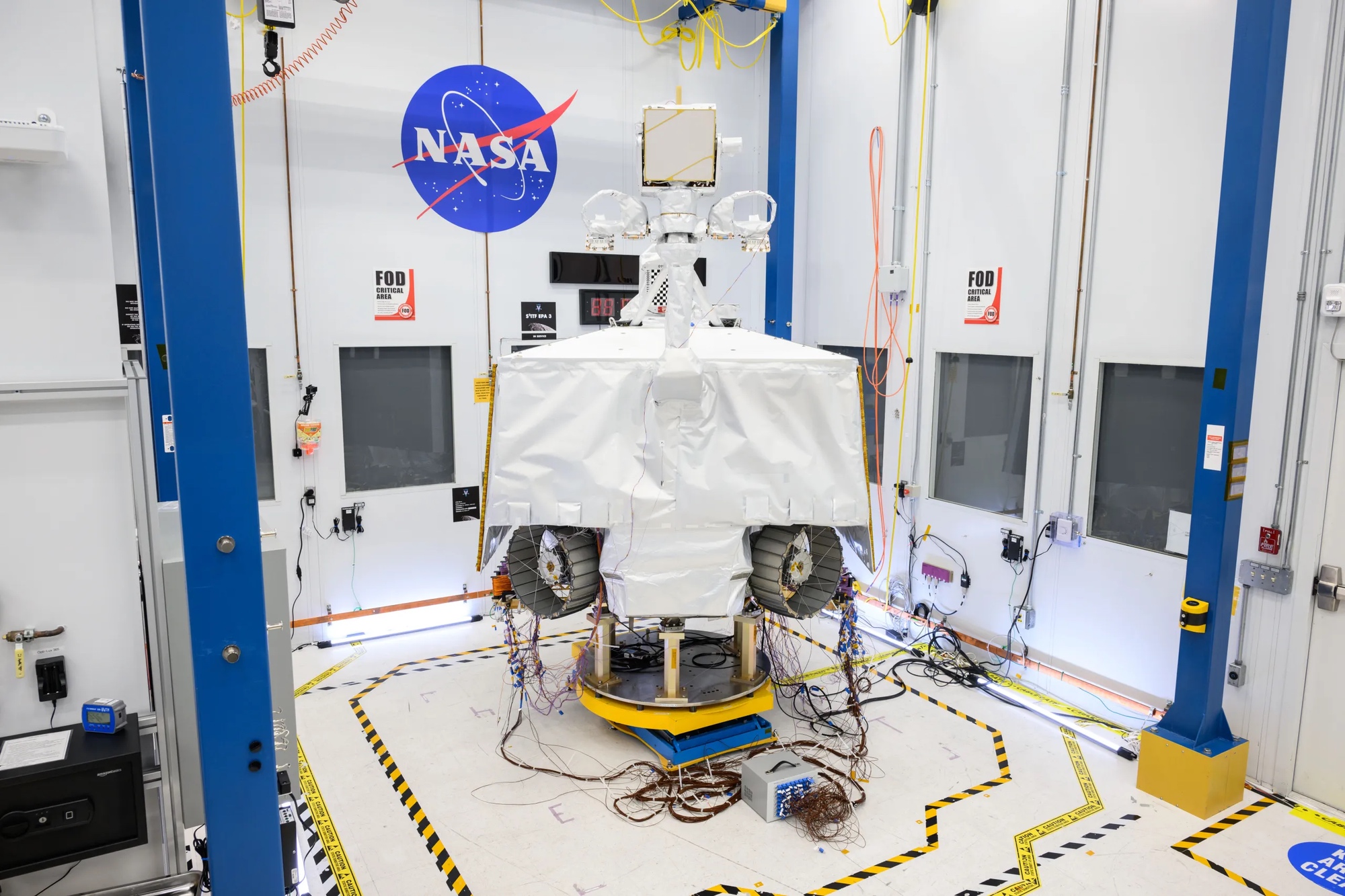LOS ANGELES— NASA is requesting concepts from companies and organizations willing to take over a robotic lunar rover that the agency announced last month it would cancel even through it is nearly complete.
NASA issued a request for information (RFI) Aug. 9 for the operation of the Volatiles Investigating Polar Exploration Rover (VIPER) spacecraft. NASA announced July 17 it planned to cancel the rover, citing development delays and cost overruns amid broader budget pressures in the agency’s science programs.
When NASA announce the cancelation, it said it was seeking “expressions of interest” from companies, organizations and international partners who might be interested in taking over the rover. Those responses were due Aug. 1, and the agency received at least a dozen, according to industry sources.
The new RFI calls on U.S. companies and organizations interested in taking over VIPER to provide details about how they would use the rover. “Partner(s) would start with the existing VIPER rover and be expected to complete any remaining systems level testing, arrange for the integration and successful landing on the moon, conduct a science/exploration campaign, and openly disseminate science data,” the agency stated.
NASA asks those responding to the RFI to describe their own mission objectives for VIPER and how it would achieve at least some of NASA’s original science objectives as well as “other opportunistic value to NASA.” NASA also wants details about how the partner will carry out the mission, and what resources that partner would need from NASA on a reimbursable basis.
The agency made clear in the RFI that an organization seeking to take over VIPER would be expected to send the rover to the moon intact: “partners may not disassemble and use instruments/parts of VIPER separately from a VIPER mission.”
“We want to make the best use possible of the engineering, technology, and expertise that have been developed by this project to advance scientific knowledge of the moon,” Nicky Fox, NASA associate administrator for science, said in a statement. “Partnership opportunities on VIPER would allow us to do this without impacting our future cadence of commercial deliveries to the moon, to continue lunar science and exploration for everyone’s benefit.”
The lunar science community is still smarting from NASA’s decision to cancel VIPER, arguing that the rover is nearly complete and that the science it can perform, studying potential water ice deposits near the lunar south pole, will not be duplicated by other missions.
At the briefing to discuss the cancelation, NASA officials said they would save at least $84 million by halting work on VIPER now, a figure they suggested could grow if the rover encountered problems during ongoing environmental testing. “I will you tell you that in general, spacecraft development system-level environmental testing does uncover problems that do need to be corrected, which would take more time and money,” said Joel Kearns, deputy associate administrator for exploration in NASA’s Science Mission Directorate.
However, Anthony Colaprete, VIPER project scientist, noted at the NASA Exploration Science Forum July 23 that the rover had completed vibration and acoustic testing for launch and was preparing to go into thermal vacuum testing. “Every single element within the rover has gone through its element-level thermal vac, so there’s a very low likelihood of significant issues as we move through thermal vac.” He added that the $84 million estimate NASA provided included reserves that could cover any issues that did arise in testing.
“As of July 23, 2024, the fully assembled rover has successfully completed its vibration and acoustic test campaigns, resulting in completed launch qualification,” NASA stated in the RFI. “The rover will be working through TVAC [thermal vacuum] testing next and is expected to complete TVAC in October 2024.”
Colaprete noted that the science team had developed the path the rover would take while on the lunar surface, a 139-day traverse that would visit several permanently shadowed regions, or PSRs, that could harbor ice. That would allow it to do science that will not be possible on missions.
“VIPER was designed to drive far, last long in a PSR — nine hours — and drill often,” he said. “Static drilling activities will never even come close to making up for what VIPER could do.”
Kearns defended the decision to cancel VIPER in a presentation earlier in the forum, saying that the costs would require NASA to “cancel and disrupt other lunar activities,” such as other Commercial Lunar Payload Services (CLPS) lander missions. NASA plans to deliver VIPER through CLPS, using Astrobotic’s Griffin lander.
Scientists at the meeting, though, noted that NASA is retaining the Griffin task order and may fly a mass simulator in place of VIPER. They also emphasized that VIPER’s science can’t be replicated on other upcoming missions.
Responses to the RFI are due to NASA Sept. 2. The agency said it would explore potential international partnerships for VIPER “through separate channels.”
Related
Read the original article here
